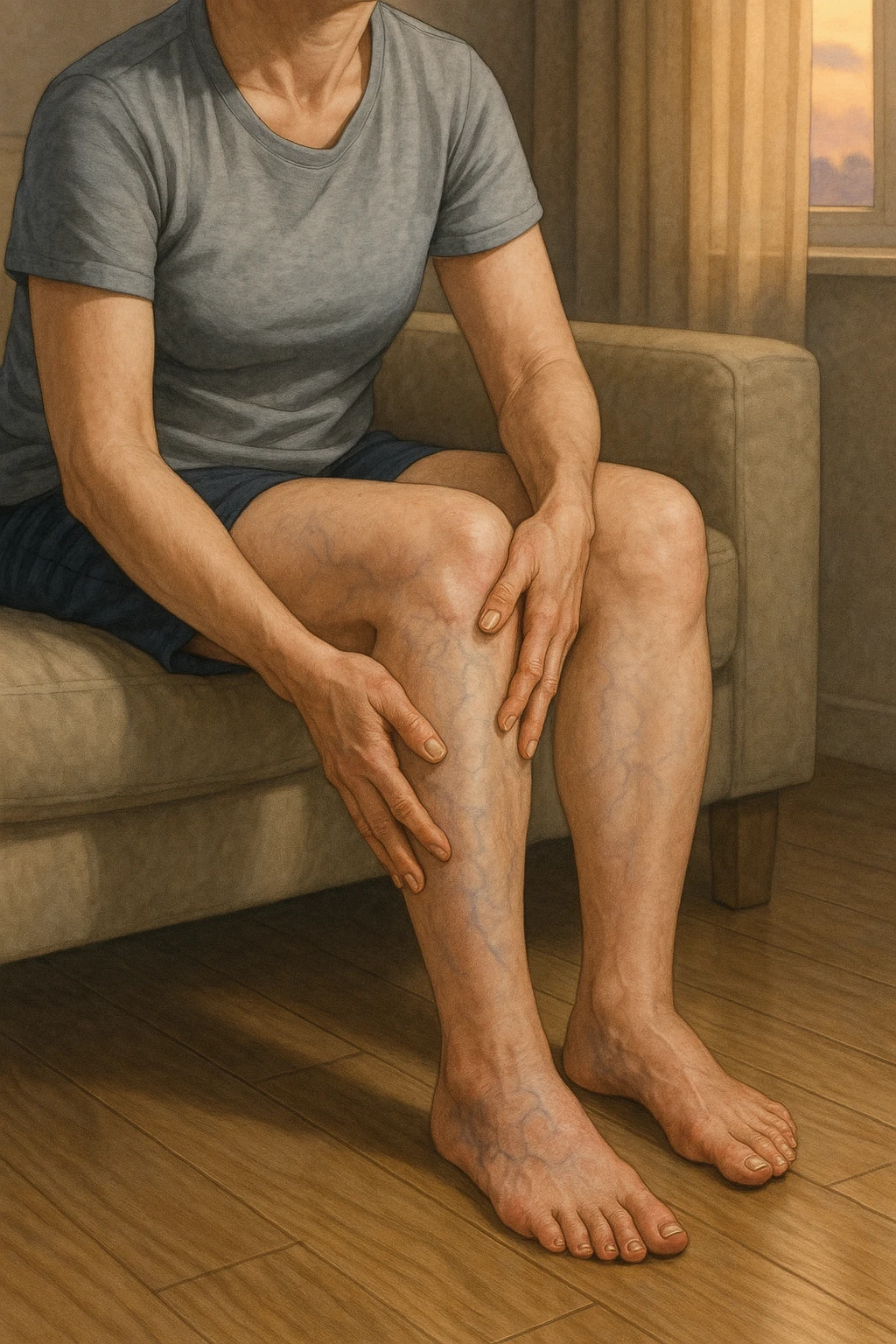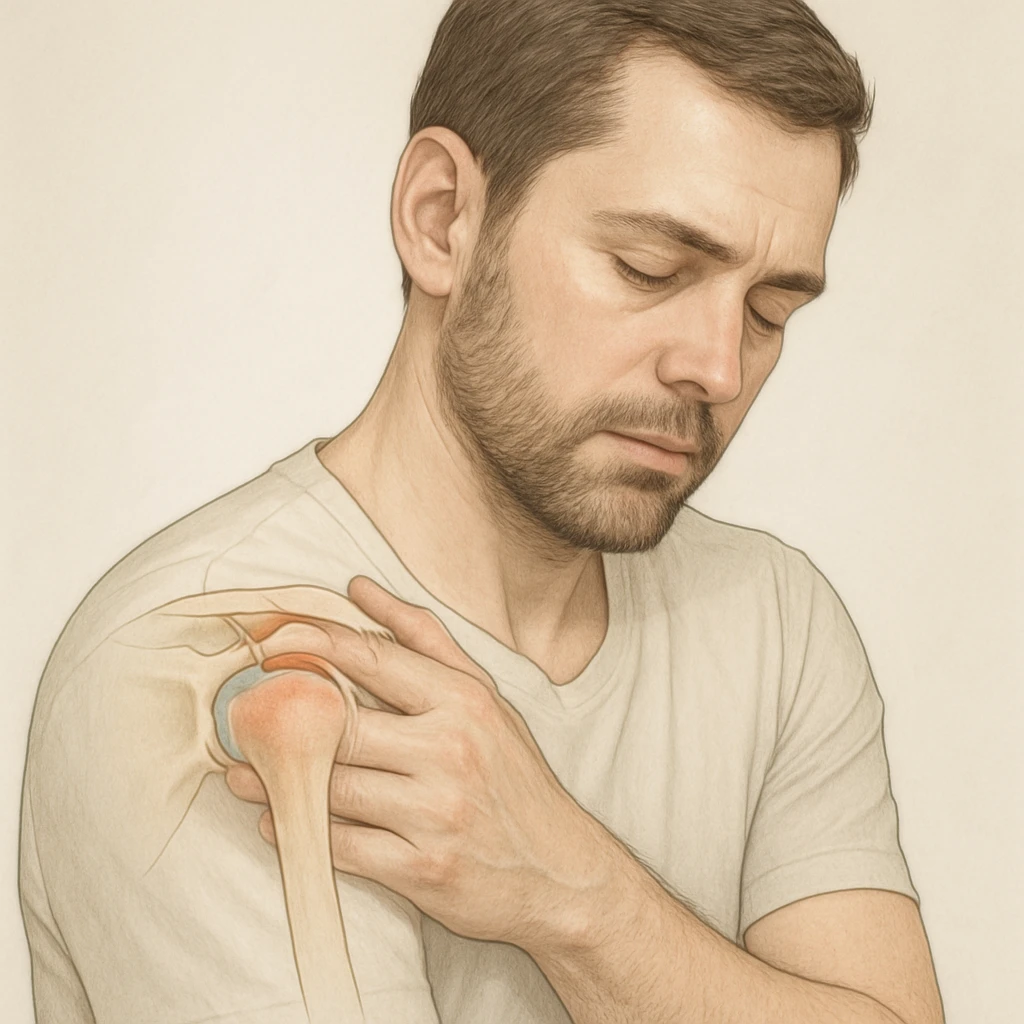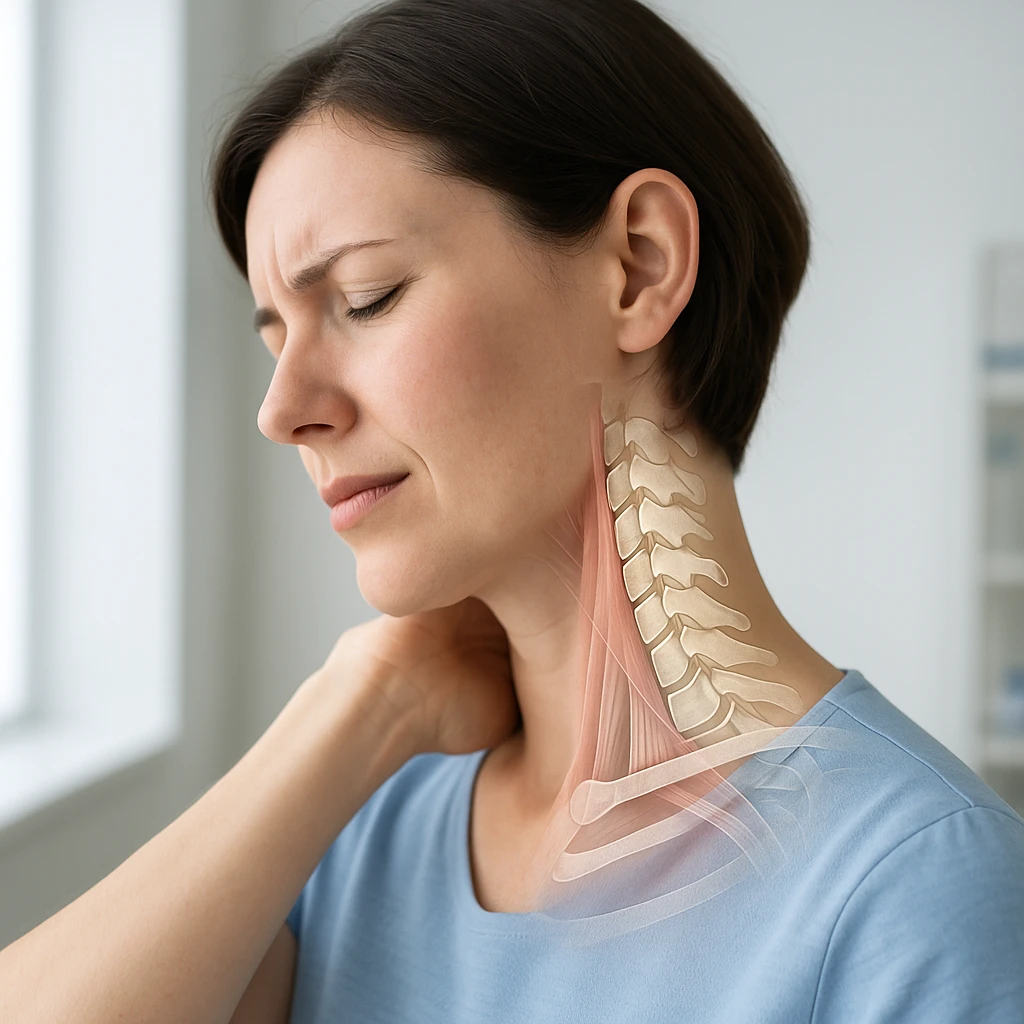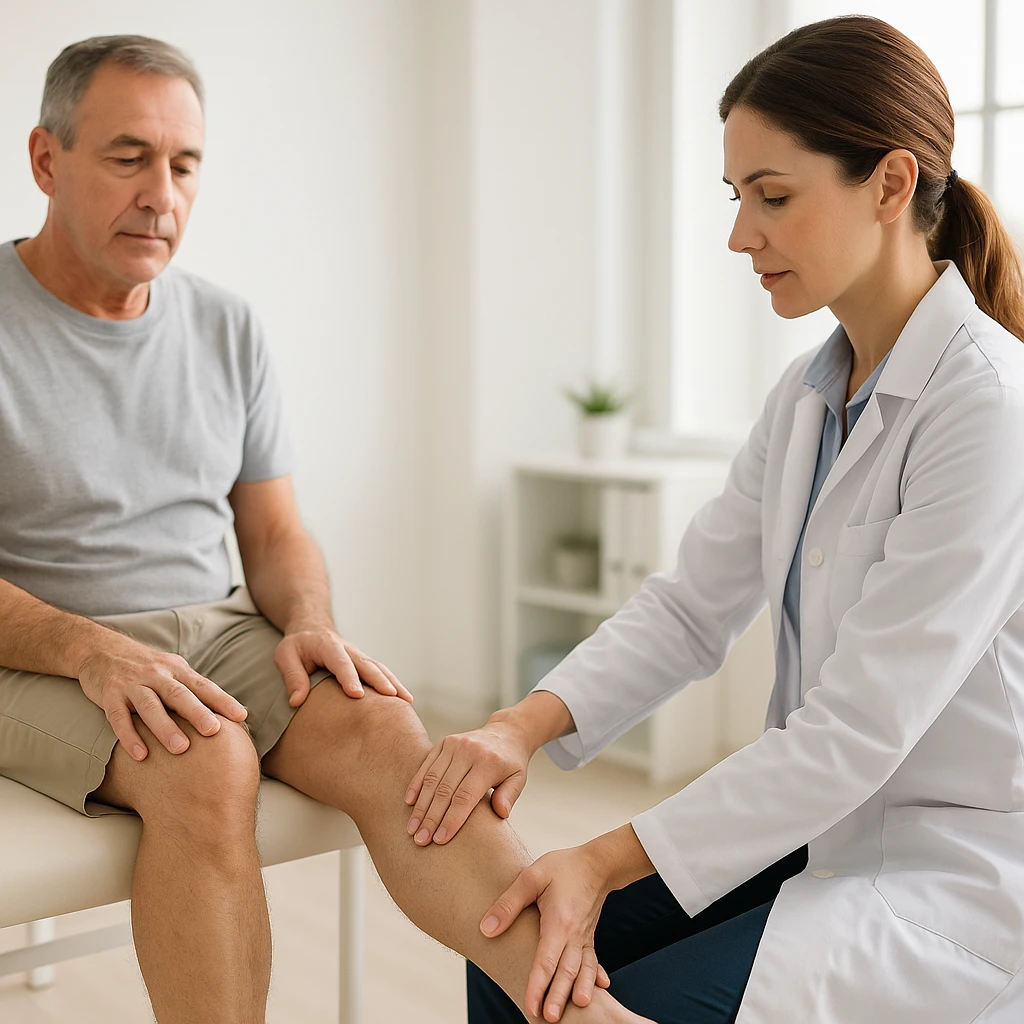Heavy Legs in Evening: Causes, Symptoms, and Relief Options
Clinical Overview and Epidemiology of Heavy Legs in the Evening
Heavy legs in the evening are among the most frequently reported symptoms of chronic venous disease (CVD). This condition reflects early venous dysfunction and may precede visible varicose veins. Patients often describe sensations of fullness, tightness, or fatigue in the lower limbs, particularly after prolonged standing or immobility. Although sometimes perceived as mild discomfort, leg heaviness signifies underlying venous hypertension and can impact daily function and vascular health.
Epidemiology and Prevalence
Chronic venous disease affects a large proportion of adults globally, with higher prevalence in middle-aged and older populations. Heaviness in the legs can occur in early, subclinical stages before varicosities or skin changes become visible. Because early symptoms are subtle, they are often misattributed to fatigue or occupational strain. However, these symptoms reflect venous valve dysfunction and venous hypertension, which may progress if untreated. The widespread occurrence of this symptom highlights its importance as both a diagnostic sign and a determinant of patient quality of life.
- Occurs across a broad adult age range, increasing with age.
- Can precede visible varicose veins or skin changes.
- Frequently mistaken for fatigue or occupational strain.
- Indicates early venous hypertension and valve dysfunction.
Clinical Features and Diurnal Patterns
Patients with chronic venous insufficiency often report heaviness, aching, swelling, cramps, paresthesias, and pruritus. Among these, heaviness is the most consistent and characteristic symptom. Intensity follows a diurnal pattern-minimal in the morning and progressively increasing throughout the day. This correlates with rising venous pressure and reduced calf-muscle pump activity from prolonged standing or sitting. By evening, venous pooling and interstitial fluid accumulation cause fatigue and fullness, often relieved by leg elevation or rest. Recognizing this daily cycle helps differentiate venous heaviness from other causes and underscores the importance of symptom timing during assessment.
Pathophysiology and Mechanisms of Heavy Legs in the Evening
The sensation of heavy legs in the evening reflects the cumulative hemodynamic and microvascular effects of venous dysfunction. In chronic venous disease, impaired venous return increases ambulatory venous pressure, leading to venous hypertension and tissue congestion. Over time, these changes disturb the microcirculation, promoting capillary leakage, low-grade inflammation, and interstitial fluid accumulation. Together, these mechanisms explain why symptoms intensify after prolonged standing or sitting and improve with rest or leg elevation.
Venous Reflux and Pressure Overload
Venous reflux occurs when valves in superficial or deep veins fail to maintain one-way blood flow toward the heart. This allows retrograde flow and sustained venous pressure elevation during ambulation. The resulting ambulatory venous hypertension increases hydrostatic pressure within lower limb veins, impairing venous emptying. Continuous pressure overload promotes vein dilation, worsening valvular incompetence and creating a cycle of reflux and congestion. Clinically, this produces a sensation of leg heaviness that peaks in the evening when venous pooling is greatest.
- Valve incompetence allows backward venous flow.
- Raised venous pressure increases hydrostatic load in the legs.
- Venous dilation perpetuates reflux, worsening evening heaviness.
Microcirculatory Dysfunction
Persistent venous hypertension disrupts microvascular function by increasing endothelial activation and capillary permeability. Elevated pressure triggers inflammatory mediators that enhance leakage of plasma proteins and fluid into surrounding tissue, causing edema and mild hypoxia. These alterations reduce nutrient exchange and trigger inflammation, contributing to the sensations of heaviness, tightness, and fatigue in the lower limbs. The reversible, posture-dependent nature of these changes explains why symptoms improve with rest or compression therapy.
Differential Diagnosis and Clinical Evaluation
Evaluation of heavy legs in the evening requires differentiation between venous and non-venous causes. Although chronic venous insufficiency is most common, arterial, neurologic, and musculoskeletal conditions can present similarly. A structured diagnostic process helps identify the underlying cause and guide management.
Differential Diagnosis Framework
Venous-related heaviness worsens after standing or sitting and is often accompanied by edema or varicosities. Peripheral arterial disease typically presents with exertional cramping relieved by rest, while musculoskeletal overuse causes localized fatigue. Neurologic conditions such as restless legs syndrome involve discomfort at rest relieved by movement. Recognizing these distinctions supports accurate diagnosis and targeted therapy.
| Etiology | Typical Features | Key Differentiators |
|---|---|---|
| Venous (CVI) | Heaviness, edema, varicosities; worse after standing | Improves with rest or elevation |
| Arterial (PAD) | Cramping or pain on exertion | Relieved by rest; diminished pulses |
| Musculoskeletal | Localized fatigue or soreness after activity | Linked to overuse, not posture |
| Neurologic (RLS) | Urge to move legs; discomfort at rest | Relief with movement or stretching |
Unilateral heaviness with swelling should raise suspicion for venous obstruction or valve incompetence. Chronicity, diurnal pattern, and triggers such as prolonged standing are key diagnostic clues. Comprehensive history and examination remain central to evaluation.
Clinical and Imaging Evaluation
Assessment includes visible signs such as varicosities, edema, and skin changes, alongside symptom timing. Diurnal variation offers diagnostic insight since venous symptoms worsen later in the day. Disease severity is staged using the CEAP classification, which categorizes patients by clinical signs, etiology, anatomy, and pathophysiology-ensuring consistent diagnosis and management planning.
Duplex ultrasonography is the gold standard for diagnosing venous insufficiency. It provides dynamic evaluation of blood flow, reflux detection, and venous mapping, essential for confirming diagnosis and defining disease extent.
Red Flags: When to Investigate Further
- Unilateral swelling with sudden onset or pain.
- Skin discoloration, ulceration, or inflammation.
- Absent pulses indicating possible arterial disease.
- Rapidly progressing or unexplained symptoms.
The presence of these signs warrants prompt diagnostic evaluation to exclude thrombosis or severe venous disease.
Conservative and Pharmacologic Management
Management of heavy legs in the evening begins with conservative measures to improve venous return and lower venous pressure. These first-line strategies aim to control symptoms and slow disease progression, while pharmacologic agents serve as adjuncts to enhance comfort and vascular tone. Treatment usually progresses from noninvasive approaches to interventional procedures if needed.
Conservative Measures
Conservative management forms the foundation of therapy for venous-related heaviness. Graduated compression stockings exert the greatest pressure at the ankle and lessen proximally to promote venous return and minimize edema. Regular use can significantly reduce heaviness, especially toward evening.
- Compression therapy: Graduated stockings improve venous return and reduce edema.
- Leg elevation: Elevating legs above heart level periodically to lower venous pressure.
- Calf-muscle activation: Walking or ankle flexion exercises stimulate venous flow.
- Postural modification: Limiting prolonged standing or sitting to prevent pooling.
These evidence-based strategies are central to long-term management of venous discomfort.
Pharmacologic Support
When conservative measures provide incomplete relief, pharmacologic agents may be added. Venoactive drugs such as micronized purified flavonoid fraction (MPFF) have demonstrated benefits in reducing heaviness, cramps, and edema in chronic venous disease. These agents improve venous tone, reduce capillary permeability, and counteract inflammation contributing to venous stasis.
Pharmacologic therapy complements but does not replace mechanical or behavioral interventions. Combining venoactive agents with compression and posture management enhances symptom relief and supports evidence-based treatment principles.
When to See a Clinician
- Persistent heaviness despite conservative management.
- New or unilateral swelling or asymmetrical symptoms.
- Associated pain, skin discoloration, or worsening edema.
These symptoms may indicate venous obstruction or disease progression and warrant duplex ultrasonography for further evaluation.
Interventional Management and Long-Term Outcomes for Heavy Legs in the Evening
When conservative and pharmacologic measures fail to adequately control symptoms of venous insufficiency, interventional treatment becomes the next step in management. The decision to proceed with an invasive approach depends on the persistence or progression of heaviness, swelling, or discomfort despite optimized noninvasive care. Before intervention, duplex ultrasonography is performed to confirm the presence and distribution of reflux, guiding the procedure selection and ensuring targeted correction of venous incompetence.
Interventional Approaches
Endovenous techniques are now the preferred methods for treating symptomatic reflux associated with heavy legs in the evening and chronic venous insufficiency. Endovenous thermal ablation, which uses radiofrequency or laser energy to close incompetent veins, is minimally invasive and typically performed under local anesthesia. Chemical ablation, achieved through foam or liquid sclerotherapy, provides an effective alternative for smaller or tortuous veins not suitable for thermal methods. In select cases involving extensive reflux or recurrent disease, surgical interventions such as vein stripping or phlebectomy remain appropriate options. The choice of procedure depends on venous anatomy, vein diameter, patient comorbidities, and clinician expertise.
- Endovenous thermal ablation: Uses radiofrequency or laser energy to close refluxing veins.
- Chemical ablation (sclerotherapy): Involves injection of foam or liquid sclerosant for smaller veins.
- Surgical options: Vein stripping or phlebectomy for extensive or recurrent venous disease.
The primary objectives of intervention are to relieve symptoms, improve venous hemodynamics, and enhance quality of life. Most patients experience significant reduction in leg heaviness, swelling, and discomfort following successful ablation or surgery, with durable symptom control in appropriately selected cases.
Monitoring and Prognosis
Post-procedural follow-up is essential to verify vein closure, assess symptom improvement, and detect recurrence. Duplex ultrasonography remains the key imaging tool for evaluating treatment success and identifying any residual reflux. Long-term outcomes are measured not only by anatomical success but also through patient-reported symptom relief and functional improvements. Standardized quality-of-life questionnaires can be used to quantify treatment benefits.
- Follow-up imaging: Duplex ultrasound to confirm closure and detect residual reflux.
- Outcome measures: Patient-reported symptom and quality-of-life assessments.
- Recurrence prevention: Continued compression therapy and scheduled clinical evaluations.
Although recurrence may occur due to neovascularization or disease progression in untreated venous segments, adherence to compression therapy and maintaining an active lifestyle help sustain results. Regular follow-up enables early identification of recurrent reflux, allowing timely reintervention when necessary. Overall, interventional treatments provide significant and lasting relief for patients with chronic venous insufficiency and persistent heaviness despite conservative management.
Frequently Asked Questions About Heavy Legs in the Evening
- Why do my legs feel heavier toward the end of the day?
- As the day progresses, gravity and prolonged standing or sitting cause blood to pool in the lower limbs. This increases venous pressure, leading to heaviness and fatigue in the legs.
- Is leg heaviness always a sign of chronic venous disease?
- Not always. While chronic venous insufficiency is a common cause, other conditions like muscle overuse, arterial disease, or restless legs syndrome can produce similar sensations.
- Can heavy legs in the evening improve with simple lifestyle changes?
- Yes. Elevating the legs, walking regularly, and avoiding long periods of immobility can help reduce venous pressure and ease symptoms over time.
- When should I see a doctor about persistent heavy legs?
- Seek medical evaluation if heaviness is accompanied by swelling, pain, skin discoloration, or if symptoms persist despite conservative measures. These may indicate underlying venous disease.
- How is venous insufficiency diagnosed in people with heavy legs?
- Duplex ultrasound is the main diagnostic test. It evaluates blood flow, identifies reflux, and maps areas of venous incompetence to guide appropriate management.
- Do compression stockings really help reduce leg heaviness?
- Yes. Graduated compression stockings enhance venous return, prevent pooling, and effectively relieve the sensation of heaviness in the evening when used consistently.
- What medications can help relieve heavy or tired legs?
- Venoactive medications, such as flavonoid-based agents, can improve venous tone, reduce inflammation, and lessen symptoms when used alongside compression therapy.
- Are interventional procedures safe for treating chronic venous insufficiency?
- Modern endovenous treatments like thermal ablation or sclerotherapy are minimally invasive and have high success rates with quick recovery times when performed by specialists.
- Can heavy legs return after treatment?
- Recurrence is possible due to new vein formation or disease progression. Regular follow-up and continued use of compression therapy help maintain long-term relief.
- Does having heavy legs in the evening mean poor circulation?
- It indicates venous, not arterial, circulation issues. Blood flow back to the heart is impaired by weak or damaged vein valves, leading to pressure buildup and discomfort.













